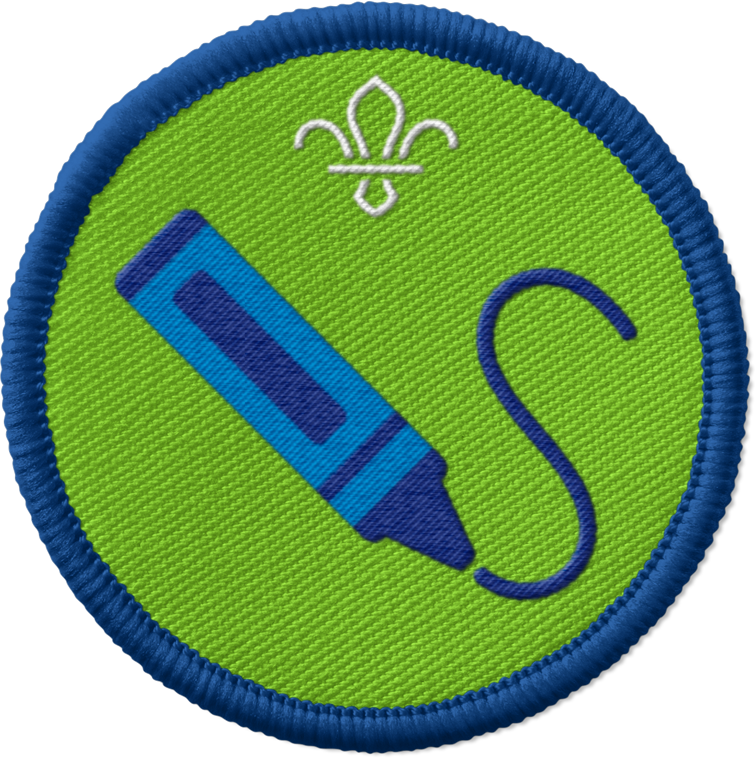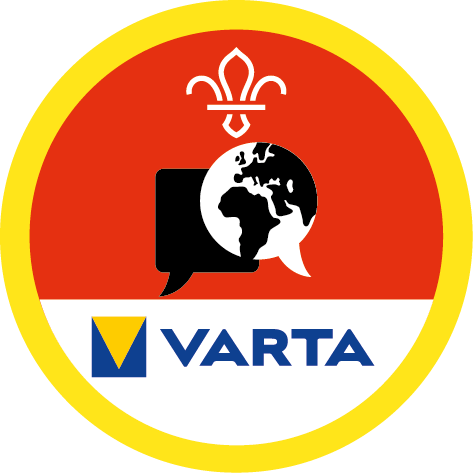
Make a recycled rocket jet pack
You’ll need
- Scissors
- Coloured pens or pencils
- Craft materials (for example, tissue paper, pipe cleaners, stickers)
- PVA glue
- Rulers
- Tissue paper
- Sticky tape
- Pens or pencils
- Clean, dry, plastic two litre bottles
- Tissue box or shoeboxes
- Pieces of A4 cardboard
- 1 m pieces of ribbon
- Glue spreaders
- Mirrored or glittery card
- Coloured paper
- Coloured card
- Hot glue gun
- Clean and dry recycling, such as egg boxes, toilet rolls, bottle tops or yoghurt pots
Before you begin
- Use the safety checklist to help you plan and risk assess your activity. Additional help to carry out your risk assessment, including examples can be found here. Don’t forget to make sure all young people and adults involved in the activity know how to take part safely.
- Make sure you’ll have enough adult helpers. You may need some parents and carers to help if you’re short on helpers.
This activity could be run for International Women’s Day, which is celebrated on the 8 March every year. International Women's Day (IWD) is a global day celebrating the social, economic, cultural and political achievements of women. The day marks a call to action for accelerating women's equality. It can also be a great way to introduce young people to inspirational women. International Women's Day has occurred for well over a century, with the first IWD gathering in 1911 supported by over a million people. Find out more about Girls and Women in Scouts.
Planning this activity
- You’ll need to collect your recycling for this activity. Everyone needs to wash out and bring two dry plastic 2 litre bottles and remove their labels.
- You may want to set up craft tables and chairs before the session starts.
- You can use hot glue for this project for strength and ease. An adult could use the hot glue gun and set up a table or station for people to bring items to be glued.
- It can be made with superglue and sticky tape. If you make it with glue and sticky tape, make sure to allow for drying time in between the steps.
- You could pre-cut the ribbon, card, tissue paper and coloured paper for people to use in advance of the session.
Who’s Mae Jemison?
- Gather everyone in a circle.
- Ask if anyone has heard of Mae Jemison and who she is or what she did. Choose a few people to answer if anyone has put their hand up.
- Explain to the group that Mae Jemison was the first African American woman to become an astronaut.
- Read out Mae’s story.
Mae Jemison was the first African American woman to become an astronaut. She was born in 1956 in Alabama, USA. She was the youngest of three children. Even as a young girl, Jemison was deeply interested in science. Mae graduated from high school at just 16 years old. She then received a scholarship to attend Stanford University in California. She graduated from university in 1977 with a degree in chemical engineering.
After university, Jemison attended medical school at Cornell University in New York. She received her medical degree in 1981. She worked as a doctor, before applying to the National Aeronautics and Space Administration (NASA) to become an astronaut.
She was one of only 15 out of 2,000 applicants accepted by NASA. Jemison entered NASA’s astronaut program in 1987. In 1992 Jemison flew as part of a crew aboard the shuttle Endeavour as the science mission specialist. The shuttle orbited Earth for more than a week in 1992. At the time she was the only female African American astronaut.
After retiring from NASA in 1993, Jemison founded her own company, the Jemison Group. The company created new technologies, especially to help developing countries. Jemison also created an international science camp for teenagers. She was also the first real astronaut to appear in the TV series Star Trek and LEGO have even made a model of her.
Making the bottles
- Ask everyone to draw or make two space-themed logos and cut them out. They can be any shape they want, but they need to be flat or 2-D. It could be a rocket, a planet, an astronaut, an alien or something else. People could draw their logo onto paper, then build it up using felt or foam, colour it in or paint it. You could also use stickers, or cut out printed images and stick them on. You could use the templates on this activity page, too.
- When you're ready, wrap a sheet of A4 card around the centre of each bottle, then stick it down. We tend to find metallic (shiny) or glittery card can work well for this.
- Cut four strips of any coloured paper. They need to be about 6 cm wide and 30 cm in length. Stick them around the top and bottom of the card on each bottle.
- Take your logo and stick it onto the front of each bottle, on top of the main card.
Making the box
- Next, take your empty box, such as a shoe box or tissue box.
- Wrap it up using paper in the colour of your choice, then stick the paper down. Remember that only the front will show so don’t worry if the paper does not reach all the way around.
- Now take a sheet of A4 cardboard, such as a cereal box. Cut two pieces of ribbon, both 1 m in length.
- Place the centre of each ribbon strip onto the centre of the A4 card, about 10 cm apart. The ends of the ribbon should overhang the cardboard on either side.
- Securely stick the middle of each ribbon down with tape. This leaves the ends of both ribbons free to tie the rocket jet pack to someone once it’s been made.
- Now, stick your tissue box on top of the ribbon, making sure it's central.
- Using the paper, card, clean and dry recycling (such as bottle tops and egg boxes) and other craft materials, add some details to the box.
- You could create different elements of a jet pack, such as buttons, switches, more logos, speakers or anything else you can think of.
Building the jets
- Next, stick a bottle to the card and the tissue box. Place one either side of the tissue box, facing the bottle top downwards.
- Gather a few 30 cm lengths of red, orange and yellow tissue paper and stick them to the inside of the bottle spout. This should make it look like the rocket’s firing up!
- Cut out strips of coloured paper, about a 6 cm to 7 cm in thickness and 30 cm in length.
- Wrap them round the bottom of the bottle, so it covers the spout of the bottle, then stick them down, so it looks like the tissue paper is firing out from a cylinder or jet.
Time to race
- Once everyone’s jet packs have been made, you could all put them on and have a race, or play a space-themed game, such as Comet’s coming!
Reflection
Ask everyone to share their designs and say one thing they like about their own design. Was it hard making the rocket jet packs? What did you enjoy about making them? What else do you think you’d need to be an astronaut, just like Mae Jemison?
What do people think they’ll see in space? Do you think it’s hard to be an astronaut? Do you think people have to work hard and work together? How did people work hard and work together to build their own rocket jet pack? And what do they think real rockets are made from?
Ask if anyone has added any cool, special features to theirs and see if they’re happy to share it with the group. Ask them what it does, how it helps and why they decided to include it.
Safety
All activities must be safely managed. You must complete a thorough risk assessment and take appropriate steps to reduce risk. Use the safety checklist to help you plan and risk assess your activity. Always get approval for the activity, and have suitable supervision and an InTouch process.
- Scissors
Supervise young people appropriately when they’re using scissors. Store all sharp objects securely, out of the reach of young people.
- Sharp objects
Teach young people how to use sharp objects safely. Supervise them appropriately throughout. Store all sharp objects securely, out of the reach of young people.
- Glue and solvents
Always supervise young people appropriately when they’re using glue and solvent products. Make sure there’s plenty of ventilation. Be aware of any medical conditions that could be affected by glue or solvent use and make adjustments as needed.
- Rubbish and recycling
All items should be clean and suitable for this activity.
- Hot tools
Tools, such as irons and glue guns, produce a lot of heat. Never touch the hot metal parts. Use them under adult supervision and on a suitable surface, protecting it if necessary. Never leave hot tools unattended and be careful near combustible materials such as wood, textiles, or paper. Make sure there’s a fire extinguisher and a first aid kit (with items to treat burns) nearby. Always follow the manufacturer’s instructions for proper use. You may need to use gloves and safety goggles with glue guns.
If people may struggle to make and design their own logo, you could use our space-themed logo colouring in sheet for everyone to use.
To make it easier, you may want to attach the mirrored card to the bottles or wrap the tissue boxes in paper before the session.
You could split this over two sessions to make it easier.
If anyone needs help or struggles with fine motor skills, give them the opportunity to work in pairs, with a young leader or an adult volunteer. Alternatively, swap out the items for something easier to handle.
There are lots of different ways to be creative. People can choose what works best for them, or just what they most enjoy.
People who struggle with making choices could find all the options a bit overwhelming, so they might need extra support or to work with a young leader/volunteer to be able to create their character.
Anyone who struggles with creating a design could be given paper with a pre-drawn image that they can glue or stick craft materials onto.
If anyone needs support in using craft items, allow them to work with someone else who can help them.
All Scout activities should be inclusive and accessible.
Ask everyone to bring in their own clean, dry recycling for the tissue boxes and bottles. Let everyone choose their own colours for the paper and design their own rocket jet pack.


